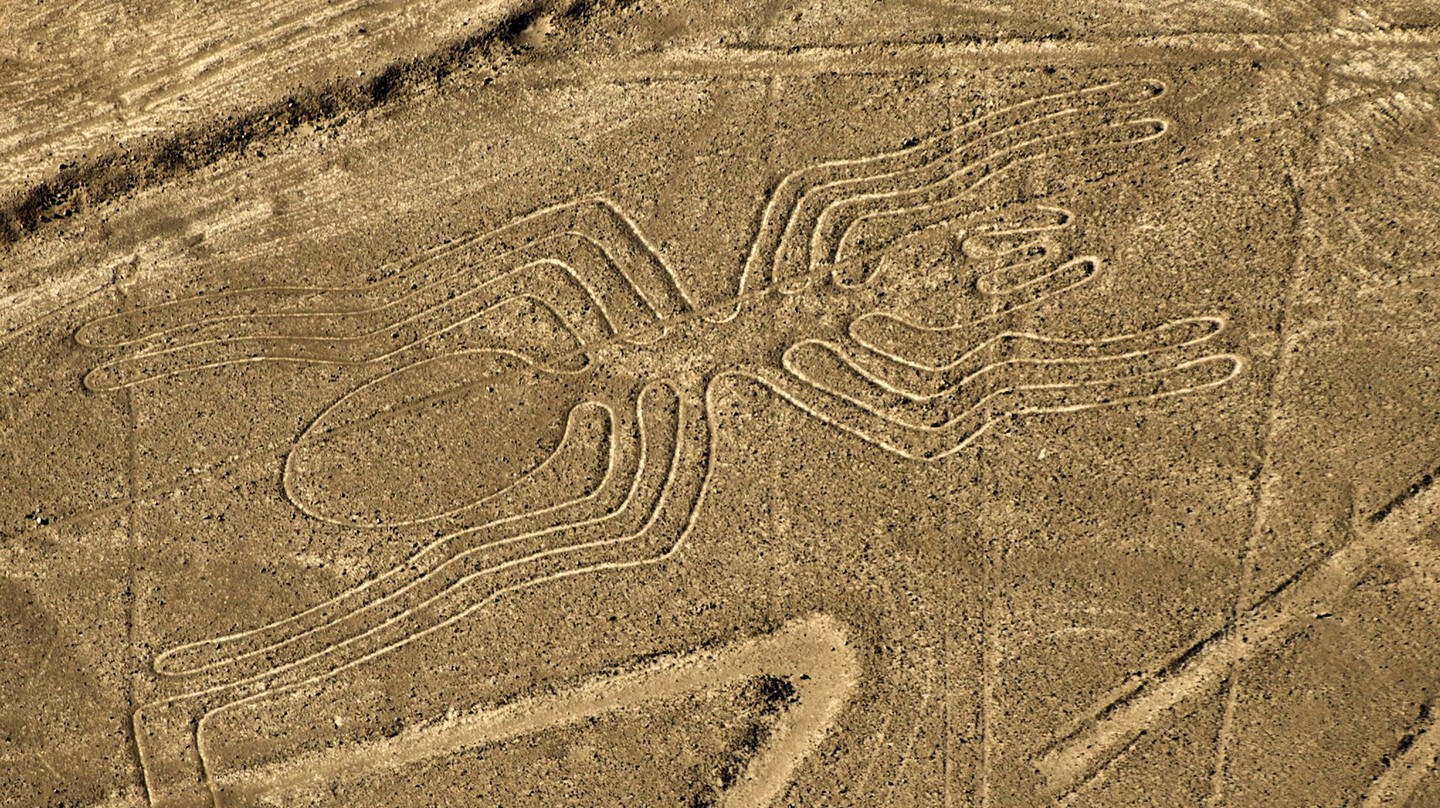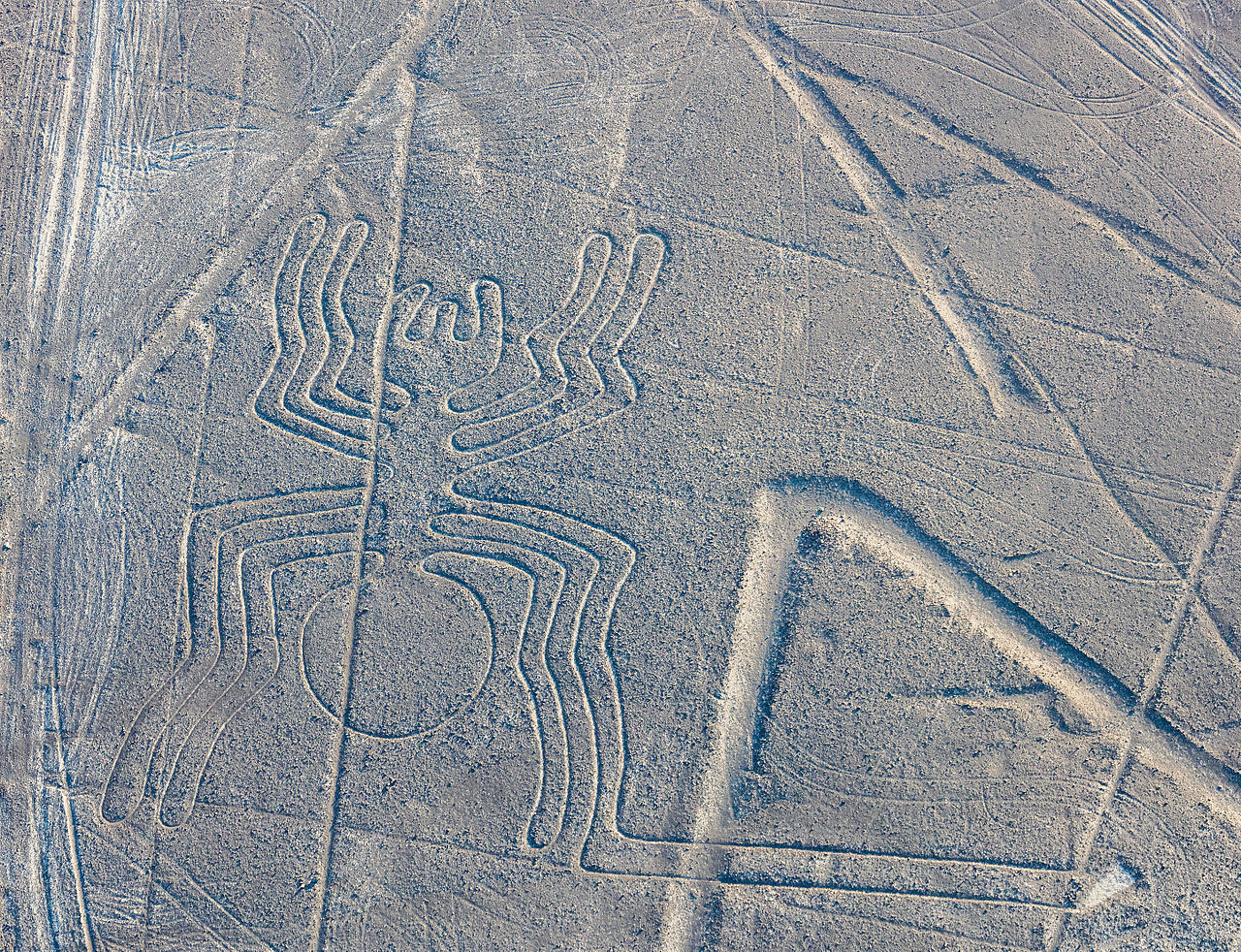
This at least ties it all together with a hydraulic system and that is making sense.
It may even be possible to calculate the full extent of irrigation and the resultant agriculture. I suspect that actual watering of a patch of this desert would produce an excellent garden. Was that done and how do we confirm it. Dry soil simply blows away.
Now at least we can dispense with the silly explanations..
Satellite Images Revealed the Secret Meaning of These Ancient Desert Spirals
KALEIGH ROGERS
May 16 2017, 3:00am
https://motherboard.vice.com/en_us/article/satellite-images-revealed-the-secret-meaning-of-these-ancient-desert-spirals
The Nazca lines are world famous geoglyphs, and their nearby spiral structure help explain why they were built.
Imagine staring out the window of an airplane and seeing a 1,200-foot hummingbird carved into the earth. Now imagine realizing that design was carved sometime between 1 and 700 AD. That's how the Nazca lines were first introduced to the western world.
Found in the southern desert region of Peru, the Nazca lines are massive drawings in the soil, also known as geoglyphs. They're named after the ancient civilization that lived in the region: the Nazca. The lines range from spirals to intricate designs like monkeys, llamas, and flowers. Some of the drawings are up to 1,200 feet—that's more than three football fields—which means they're best viewed from above, in a plane, or from a satellite.

One of the Nazca lines. Image: WikiMedia Commons
But they were created long before planes or satellites, leaving generations of scholars to ponder why they were made, particularly if the Nazca people couldn't enjoy the full glory of their work. Thanks to satellite imaging, scientists believe they have a good hypothesis for the mystery behind these lines. They were linked to the most precious desert resource: water.
Hear our interview with Rosa Lasaponara and the full story behind the Nasca lines on Science Solved It:
"They were able to use the underground water to have irrigation, and aqueducts, for agricultural activity and in this way it was possible for the Nazca to transform the desert into a garden," said Rosa Lasaponara a senior research at the National Research Council in Rome.
Lasaponara co-authored a study last year that used satellite images to investigate some unusual structures found in the landscape near the Nazca lines: spiral-shaped holes called puquios. The satellite imaging allowed the researchers to see below the surface and identify underground water channels that connected these spiral holes, and realized they were part of an advanced, ancient aqueduct system.
Underground water was led through canals to the parts of the region where the Nazca lives and farmed. The water was propelled in part by these spiral puquios, which forced wind into the underground channels to push the water through the system.
This understanding was huge, because it lent credibility to a theory many scientists already had about the Nazca lines, that they were ceremonial, and linked to water. Since the structures nearby were part of a sophisticated water system, it makes sense that the ritualistic designs would be to mark that water's location and/or to give thanks for this hydration.
"It's very clear that the puquios and Nazca lines have the same meaning, because water was the way to survive in the desert environment," Lasaponara said. "The Nazca lines were to way to thank the gods for this."
Some people still aren't satisfied with this explanation, and believe these designs are messages sent to ancient aliens or that the Nazca people invented prehistoric hot air balloons to survey their work. But Dylan Thuras, the co-founder of Atlas Obscura, a site dedicated to the world's hidden wonders, said these theories are trying to use a very modern viewpoint to explain an ancient mystery.
"If you only look at it in one framework, that it's a giant carving to be seen from above, you get completely hung up on trying to figure out how it was possible," Thuras said. "But if you understand its relation to water sources, it doesn't seem so impossible."
No comments:
Post a Comment